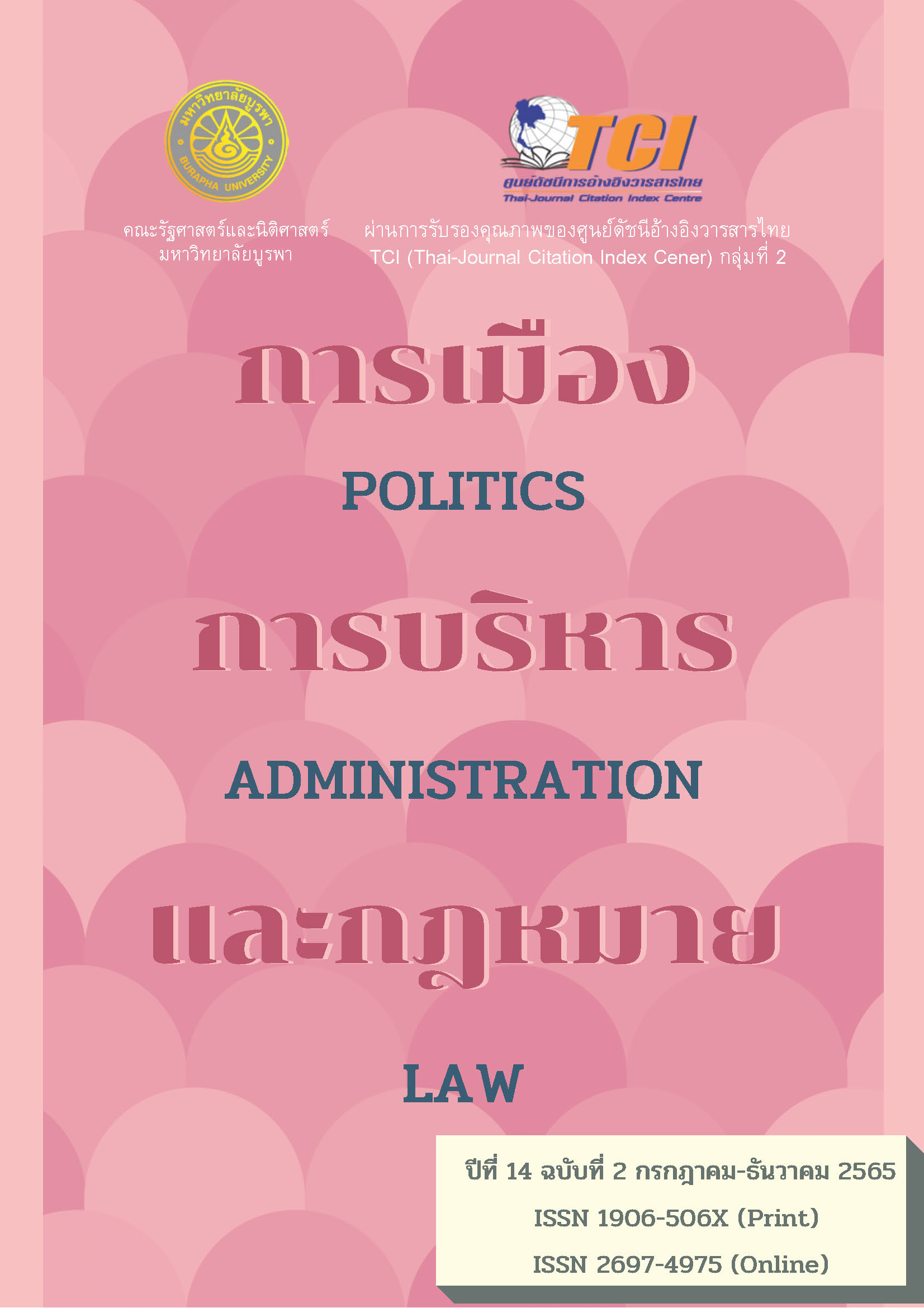The Quality of Work Life of Non-Commissioned Officers: Case Study Armed Forces Development Command, Royal Thai Armed Forces Headquarters
Keywords:
Quality of Work Life, Non-Commissioned Officers, Armed Forces Development CommandAbstract
The purpose of this research is to (1) study the quality of work life of non-commissioned officers, a case study of Armed Forces Development Command, Royal Thai Armed Forces Head Quarter and (2) compare the quality of work life of non-commissioned officers based on personal factors consisting of the rank/work experience, age, education level, marital status, and income, a case study of Armed Forces Development Command, Royal Thai Armed Forces Head Quarter. The population consist of 180 non-commissioned officers from Armed Forces Development Command, Royal Thai Armed Forces Head Quarter determined by Taro Yamane’s formula, selected with the convenience sampling method. The data is analyzed by statistical software with the frequency, percentage, average, and standard deviation parameters. The hypothesis is verified with the t-test, One Way ANOVA factor comparison methods. The result reveals that the quality of work life of non-commissioned officers, a case study of Armed Forces Development Command, Royal Thai Armed Forces Head Quarter has a high average rate at 3.98 where the social relevance factor has the highest average score. In addition, the comparison between the personal factors reveals that the education level and income factors can explain the differences in the quality of work life with a statistically significant value at .05.
References
กองบัญชาการกองทัพไทย. (2563). วิสัยทัศน์กองบัญชาการกองทัพไทย. วันที่ค้นข้อมูล 29 พฤศจิกายน 2563, เข้าถึงได้จาก https://www.rtarf.mi.th/pdf/mission_vision.pdf
กัลยา วานิชย์บัญชา. (2544). หลักสถิติ (พิมพ์ครั้งที่ 6). กรุงเทพฯ: โรงพิมพ์จุฬาลงกรณ์มหาวิทยาลัย.
เกศณี วงศาโสภา. (2562). คุณภาพชีวิตในการปฏิบัติงานของข้าราชการทหาร หน่วยบัญชาการทหารพัฒนากองบัญชาการกองทัพไทย. วิทยานิพนธ์ศิลปศาสตร์มหาบัณฑิต, มหาวิทยาลัยราชพฤกษ์.
จตุรงค์ บุผาสิงห์. (2559). คุณภาพชีวิตในการทำงานของข้าราชการทหารหน่วยบัญชาการทหารพัฒนา. วิทยานิพนธ์รัฐประศาสนศาสตรมหาบัณฑิต, มหาวิทยาลัยรัตนบัณฑิต.
จารุกฤษณ์ เรืองสุวรรณ. (2554). คุณภาพชีวิตการทำงานของทหารกองประจำการสังกัดกองพันทหารราบที่ 1 กรมทหารราบที่ 1 มหาดเล็กรักษาพระองค์. วิทยานิพนธรัฐประศาสนศาสตรมหาบัณฑิต, สถาบันบัณฑิตพัฒนบริหารศาสตร์.
ชัยสิทธิ์ สุวรรณน้อย (2558). คุณภาพชีวิตการทำงานของข้าราชการทหารอากาศกองบิน 21 ในเขตอำเภอเมือง จังหวัดอุบลราชธานี. วิทยานิพนธ์บริหารธุรกิจมหาบัณฑิต, มหาวิทยาลัยราชภัฏอุบลราชธานี.
นเรศน์ วงศ์สุวรรณ. (2563). กองทัพกับการพัฒนาประเทศ. วันที่ค้นข้อมูล 29 พฤศจิกายน 2563, เข้าถึงได้จาก http://www.geocities.ws/cgscsos/mil_dev.pdf
บุญแสง ชีระภากร. (2533). การปรับปรุงคุณภาพชีวิตในการทํางาน. จุลสารพัฒนาข้าราชการพลเรือน, 33(1), 5-12.
ผจญ เฉลิมสาร. (2540). คุณภาพชีวิตการทํางานของพนักงานระดับกลาง: ศึกษากรณี. โรงเรียนในนิคมอุตสาหกรรม เวลโกรว์ จังหวัดฉะเชิงเทรา. วิทยานิพนธ์สังคมพัฒนบริหารศาสตรมหาบัณฑิต, สถาบันบัณฑิตพัฒนบริหารศาสตร์.
ยุทธศาสตร์ชาติ (พ.ศ. 2561 – 2580). (2561, 13 ตุลาคม). ราชกิจจานุเบกษา. เล่มที่ 135 ตอนที่ 82 ก, 1-71.
รัตนาภรณ์ บุญมี. (2558). คุณภาพชีวิตในการทํางานของพนักงานเทศบาลตําบลนาดี. งานนิพนธ์รัฐศาสตรมหาบัณฑิต, มหาวิทยาลัยบูรพา.
Huse, E. F., & Cummings, T. G. (1985). Organization Development and Change. Minnesota: West Publishing Company.
Walton, R. E. (1973). Quality of Work Life: What is It?. Sloan Management Review, 15(1), 11-21.
Watson, R. R. (2010). 5-Point Likert Scale. Handbook of Disease Burdens and Quality of Life Measures. New York: Springer.
Yamane, T. (1973). Statistics: An Introductory Analysis (3rd ed.). New York: Harper and Row Publication.
Downloads
Published
Issue
Section
License

This work is licensed under a Creative Commons Attribution-NonCommercial-NoDerivatives 4.0 International License.






